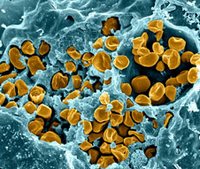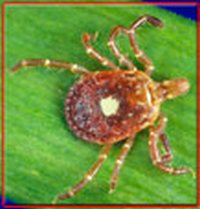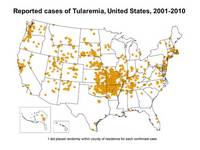
Tularemia is a zoonotic infection caused by the highly infectious bacterium Francisella tularensis. F. tularensis infections can occur via insect or tick bites, cutaneous contact with infected animal carcasses, ingestion of contaminated food and water, or inhalation of viable organisms. The type and severity of tularemia depends on the strain, dose, and route of infection. Cutaneous tularemia is the most common form of human disease, but is rarely fatal. Inhalation of F. tularensis results in respiratory or pneumonic tularemia and is most common in people in endemic areas who perform tasks that predispose them to infectious aerosols. Untreated respiratory forms of disease have mortality rates of >30%. The infectious dose of F. tularensis by the pulmonary route is as low as 10 microorganisms.

Tularemia is a widespread disease in the United States and is most common in the south-central, Pacific Northwest and Midwest regions of the country. From 2001-2010, Missouri had the most cases of tularemia reported followed by Arkansas and Oklahoma. The high infectivity and mortality of F. tularensis infections have led to the weaponization of the organism, including the introduction of antibiotic resistance, by several nations, and no vaccines are currently licensed to prevent tularemia.

Due to the lack of efficacious vaccines and concerns about F. tularensis acquiring resistance to antibiotics via natural or illicit means, scientists at MU are investigating stimulation of innate immunity as a countermeasure against tularemia. Stimulation of innate immunity can be especially useful in situations where the etiologic agent of disease is unknown, since induced innate immune responses are often capable of providing protection against a broad range of organisms. Current work at LIDR is aimed at discovering new and refining current immunotherapy strategies and also investigating pathways of protective immunity against tularemia that can be exploited via immunotherapy.
Images courtesy of the Centers for Disease Control and Prevention